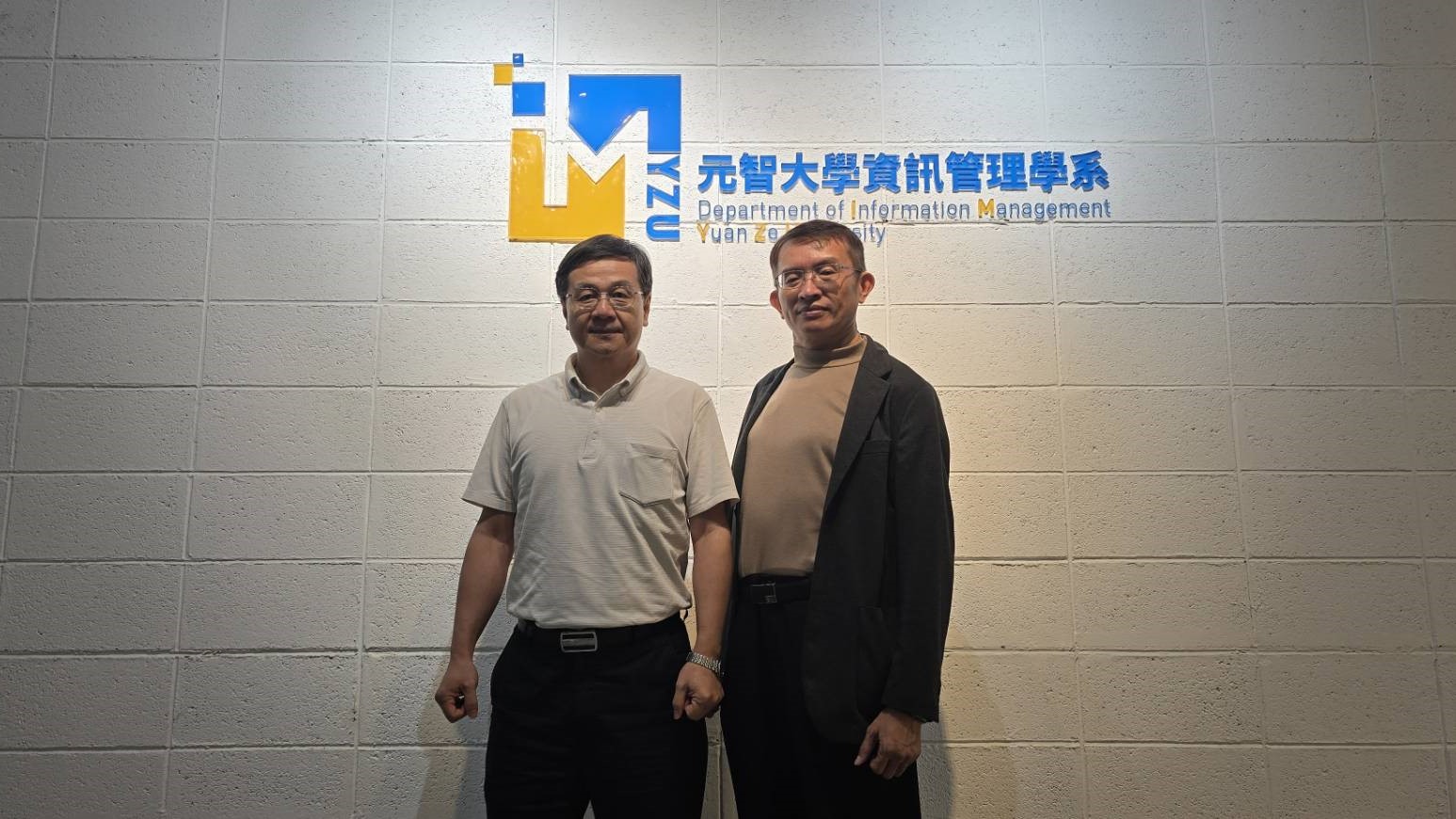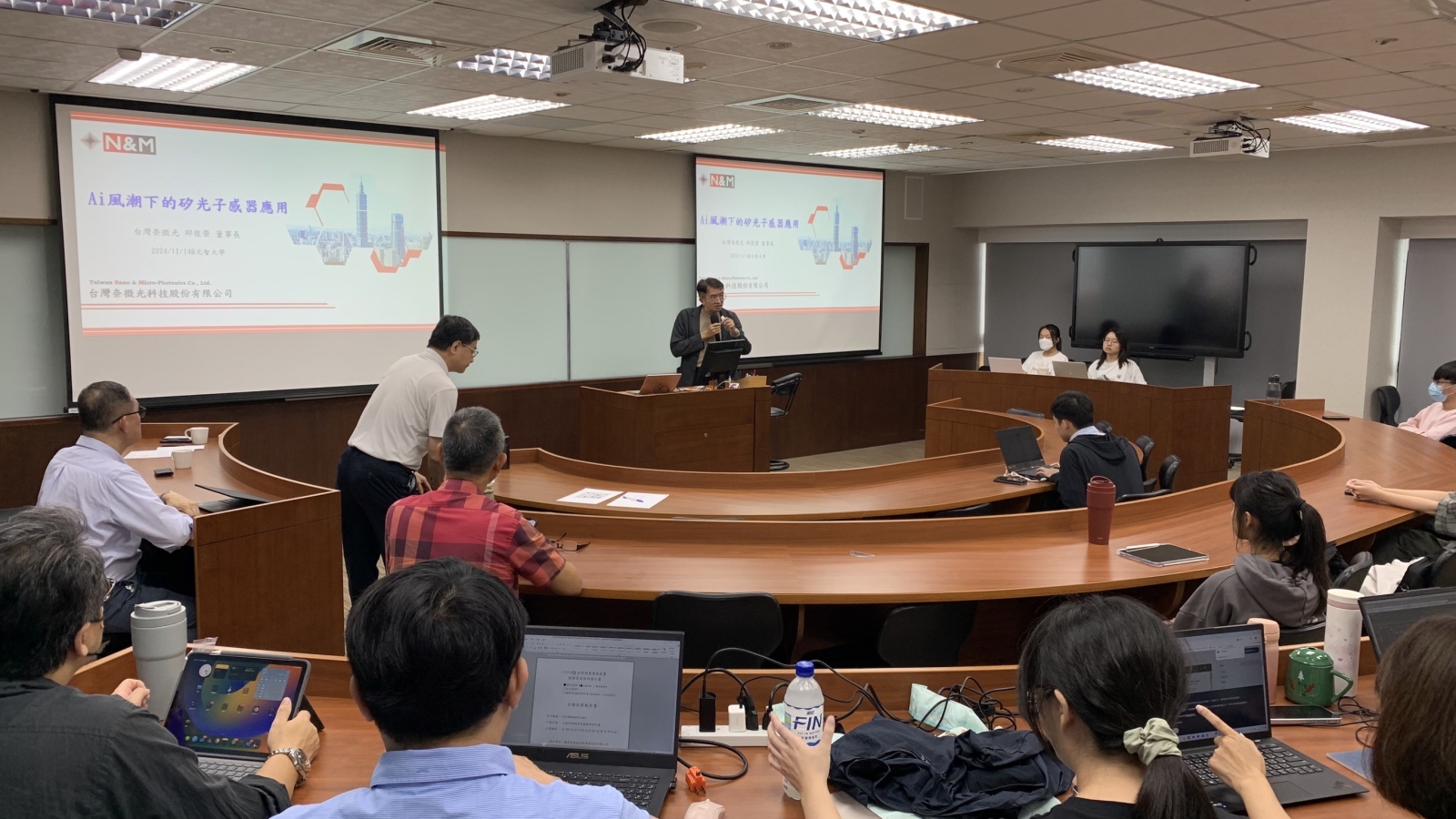
Yuan Ze University Information Management Professor Chao-Chang Chiu (left) and Taiwan Nano & Micro-Photonics Chairman Rone Chiu (right). Picture/N&M offered
"Silicon photonics sensing endows AI robots with taste and smell, opening a new dimension of sensory capabilities!" This was the key insight shared by Taiwan Nano & Micro-Photonics (N&M) Chairman Rone Chiu during a recent lecture at Yuan Ze University, where he showcased how silicon photonics technology is propelling AI robotics into the era of full sensory perception.
As NVIDIA CEO Jensen Huang has boldly stated, AI robots are set to become the cornerstone of human civilization's progress. This sentiment has fueled global discussions and investments. According to Market Research Future, the AI robotics market is projected to surge from $11.34 billion in 2024 to $89.47 billion by 2032, with a compound annual growth rate of 29.45%. Against this backdrop, N&M's silicon photonics sensing technology emerges as a critical driver for advancing AI applications.

N&M's Chairman Rone Chiu shares insights with graduate students and professionals on integrating silicon photonics sensing into AI innovation. Picture/N&M offered
During his lecture, Chairman Rone noted that while current AI robots possess visual, auditory, and tactile abilities, they lack the capability to replicate human senses of smell and taste. The rise of silicon photonics sensing offers a groundbreaking solution, enabling precise detection of odors and flavors in the environment. This advancement represents a transformative leap in AI robotics and an essential innovation for future smart living.
AI robots equipped with taste and smell can deliver significant value across various domains, including health monitoring, food quality inspection, environmental pollution control, safety protocols, and even lifestyle applications such as dietary recommendations, cooking assistance, wine evaluation, and fragrance management. These innovations not only enhance quality of life but also unlock new possibilities for smart cities and smart homes.
N&M has committed to localizing silicon photonics technology development in Taiwan, adopting a unique strategy that targets the "Beyond Communication" domain, particularly the untapped market of infrared sensing. Leveraging Taiwan’s world-class CMOS manufacturing capabilities, N&M integrates multi-spectrum sensing into single chips (Multifunction in One Chip), injecting new vitality into AI technologies and collaborating with diverse industries to expand application scenarios.
The lecture attracted significant interest from both Yuan Ze University faculty and students, as well as numerous industry professionals. Many companies expressed keen interest in N&M’s silicon photonics technology and their desire for collaboration to explore product development opportunities. Chairman Rone emphasized that while N&M’s silicon photonics sensing technology boasts world-leading capabilities, fostering local partnerships is crucial to building a robust Taiwanese silicon photonics ecosystem. Such collaborations will further solidify Taiwan’s presence on the global stage.
This successful lecture bridged the gap between academia and industry, laying a vital foundation for a comprehensive silicon photonics ecosystem in Taiwan.